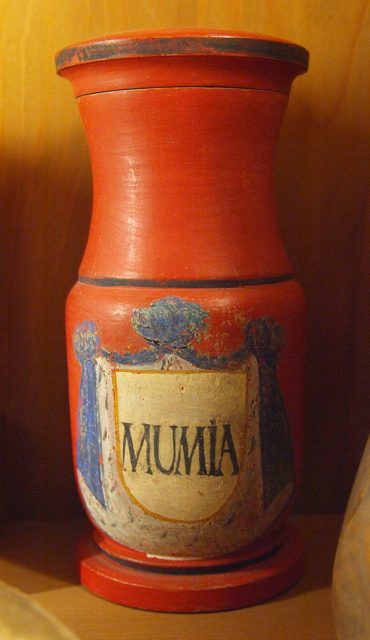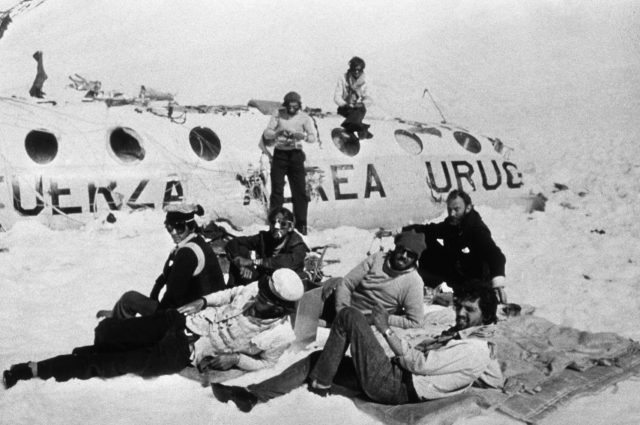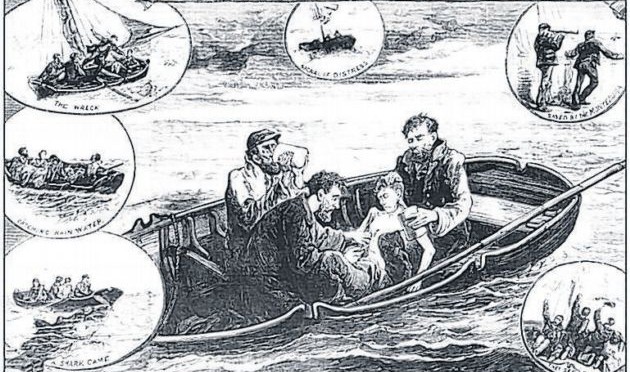For me, eating other people is a no-no; however, were I to find myself on a deserted island, with a recently deceased companion as the only available food source, I might be inclined to have a little nibble. And I am not alone; there are numerous cases where people, finding themselves in a similar situation, have opted for eating their companions rather than starve to death.
This willingness to eat people, when in dire straits, makes me wonder: is eating people wrong, or is it merely an ingrained taboo?
In an effort to answer this question, I thought I would do a little research into the phenomenon of cannibalism, of which there is basically 3 types: Ritual, Survival and Criminal. While these categories are not mutually exclusive – indeed, a single act of cannibalism can contain elements of all 3 – I will, for the sake of clarity, discuss each in turn – except I won’t bother discussing criminal cannibalism – where the mentally deranged eat folk for pleasure – because…well, that’s just not cricket.
Ritual cannibalism
Once the avocation of preindustrial tribes, ritual cannibalism was generally collective, ceremonial and effective (i.e. for a specific purpose). The purpose of a cannibalistic act, within a given tribe, determined who was eaten – i.e. friend or foe.
Friend: Endocannibalism – consuming someone within one’s community
In some tribes, recently deceased relatives would be eaten as part of elaborate funeral rites. This was done to assuage the grief of the living and confer immortality on the eaten – as it was thought their soul would continue living in the body of their relative…who would then be eaten when they died…ad infinitum. The basic premise of this type of cannibalism – consuming a bit of your relative as a nod towards eternal life – seems reasonable to me…though I personally think a moving eulogy and divvying up the heirlooms works just as well.
In other tribes, endocannibalism was attached to human sacrificial rites; whereby a specially selected tribe member was ritually slain and consumed in order to illicit favour from the gods…in the hope of achieving success in hunting, battle or to ensure bountiful crops.
Foe: Exocannibalsm – consuming someone outside one’s community
Somewhat more gruesome and morally iffy was the consumption on one’s enemy – being that it was generally preceded by their brutal and untimely death. Such unfortunates were generally from neighbouring tribes, recently slain in battle; or, as popular history would have us believe, foolhardy European explorers. Cases of the latter were exceedingly rare; indeed, in all my research (courtesy of Google) I did not come across a single case.
What I did come across were numerous examples of tribes, from all over the world, that engaged in some form of exocannibalsim. Naturally, there were variants of this type of cannibalism; however, as a general rule, only certain parts of the conquered were consumed – predominantly the heart and liver. For example, the heart of a great warrior was thought to have talismanic properties, whereby its consumption conferred the warrior’s attributes on the consumer. Alternatively, it was thought the best way to prevent the spirit of your enemy from seeking revenge was to eat them. While this may seem unnecessary and repugnant to the modern mind, it is important to note that ritual and purpose surrounded such acts.
During the age of European exploration, the practice of both endo- and exo-cannibalism – by tribes explorers came in contact with – was used as justification for colonisation (fancy for theft and exploitation) and the imposing of European cultural values – thus destroying the customs, values and identities of the tribes in question. Not only was this an incalculable travesty, it was hypocritical. For doing the rounds of Europe at the time were a number of medical preparations that contained none other than…yes, you guessed it…people.
In the 16th century, pulverised mummy (as in Egypt, not dearest) proved particularly popular and was thought to be an effective cure for bleeding disorders. Unsurprisingly, popularity waned somewhat, when it was discovered that ethically challenged Chemists were in cahoots with grave-robbers…making use of more recently interred corpses. Still, real mummy was considered a legitimate cure well into the 18th century.

Human fat was equally revered for its curative properties from the 16th to 19th century. Although not ingested, it was used in ointments for a number of afflictions – including bone pain, tooth ache and gout. It was also used as a remedy for tuberculosis and as a pain-reliever for rheumatoid arthritis. Nearer to actual cannibalism was the use of liquefied, human fat injections – called Humanol. Used in the treatment of scar tissue and other skin afflictions, Humanol fell into disuse by the 1920’s due to its lack of actual healing properties and tendency to cause fatal embolisms.

The use of human products and tissues, in various medical procedures, is widely accepted today – from blood transfusions to organ transplants. Although a far cry from pulverised mummy and Humanol injections – these early concoctions are the direct antecedents of modern human-tissue appropriation; and while not technically cannibalism, still involve the use of human products and tissue for survival. Which brings us to our next category.
Survival cannibalism
As the name suggests, this category concerns eating people to survive.
Perhaps the most famous example of survival cannibalism is the 1972 Andes Air Disaster. A Uruguayan airplane, carrying 45 people (a Ruby Union team and their entourage) crashed in the Andes mountain range. With little food and freezing temperatures, the chances of survival were next to nothing. Yet remarkably and beyond all probability, 16 people lived to tell the tale. Key to their survival was their willingness to eat their dead companions.

Survivor Nando Parrado, who played the key role in his and his teammates eventual rescue, spoke candidly of the decision to eat the dead in order to stay alive; stating that the majority of the survivors came to the same conclusion simultaneously and independent of each other. Suggesting that, in such circumstances, cannibalism – despite its inherent horrors – presents itself as the natural thing to do. Humans cannot survive without food…human flesh is processed by the body like any other meat…so, when there is nothing else to eat, human is a viable food source – the consumption of which is the difference between life and death.
Indeed, Parrado describes in his book – Miracle in the Andes – the stark reality that led to their life saving decision:
At high altitude, the body’s caloric needs are astronomical … we were starving in earnest, with no hope of finding food, but our hunger soon grew so voracious that we searched anyway …again and again we scoured the fuselage in search of crumbs and morsels. We tried to eat strips of leather torn from pieces of luggage, though we knew that the chemicals they’d been treated with would do us more harm than good. We ripped open seat cushions hoping to find straw, but found only inedible upholstery foam … Again and again I came to the same conclusion: unless we wanted to eat the clothes we were wearing, there was nothing here but aluminium, plastic, ice, and rock.
Even so, the decision to actually engage in cannibalism was heart-wrenching – as described by fellow Andes survivor, Dr Roberto Canessa, in his book – I had to Survive:
After just a few days we were feeling the sensation of our own bodies consuming themselves just to remain alive. Before long we would become too weak to recover from starvation. We knew the answer, but it was too terrible to contemplate. The bodies of our friends and team-mates, preserved outside in the snow and ice, contained vital, life-giving protein that could help us survive. But could we do it?
For a long time we agonised. I went out in the snow and prayed to God for guidance. Without His consent, I felt I would be violating the memory of my friends; that I would be stealing their souls. We wondered whether we were going mad even to contemplate such a thing. Had we turned into brute savages? Or was this the only sane thing to do? Truly, we were pushing the limits of our fear.
Both Parrado and Canessa claimed the one thing that enabled them to overcome their moral revulsion, was the absolute certainty that if they were to die, they would want their surviving friends to consume them in order to live.
Consuming the flesh of someone already dead is called necro-cannibalsim; which, in law, is a bit of a grey area: for while it is generally illegal to desecrate a corpse (which, it is reasonable to assume, includes eating it) many countries do not have specific laws against cannibalism. When homicide is involved the law is clear – it is wrong. However, one British case challenged even this – a case that led to a definitive ruling in English law – i.e. necessity is no defence for murder.
The case in question was Regina vs Dudley & Stephens.

Dudley and Stephens were adrift on raft with two of their crew mates, after their boat – the Mignonette – was destroyed in a storm. After two weeks of floating, fighting off a shark and having long finished their two tins of turnips, the quartet were near death. The youngest of the four, Parker, became violently sick after drinking sea water and fell into a coma. Surmising Parker’s end was nigh, Dudley and Stephens nudged him into the afterlife and then proceeded to eat him…as did the fourth crew mate, Brookes. They were rescued a four days later and, on returning to England, Dudley and Stephens were tried for murder (although Brookes had helped eat Parker, he had not taken part in his murder, so was not charged). With the ruling that necessity is no defence for murder, the pair were convicted and sentenced to death. There was a big hoo-ha at the time and opinion was divided, resulting in their sentence – which carried a recommendation for clemency – being commuted to 3 months in prison.
Accounts such as these illustrate an interesting aspect of survival cannibalism: i.e. despite the worldwide antipathy towards cannibalism, when there is nothing else to eat…people – almost invariably – start eating each other; indicating that, in such circumstances, the choice to eat someone has less to do with morality and a lot to do with the nature of starvation.
Starvation is a process…a horrific one. One that literally consumes a person…body, mind and soul. On a physical level, once the body has gone without food for 3 or more days, it begins to breakdown and burn muscle fibre, next it is fat reserves and, finally, organ tissue – resulting in death. The process is physically agonising; to say nothing of the psychological and emotional torment. All in all, it is the most pitiful experience a flesh-bound being can endure…which is why the law tends not to convict people who resort to cannibalism to avert it.
Even the Bible has no direct prohibition against eating people; rather, it mentions it as a forgone conclusion in times of war – particularly siege; insisting that it is not just the barbarous few that partake in such act, but even “the most tender and dainty among you” (Deuteronomy 28:56).
Not much has changed. Examine the annuals of any major conflict – where people are cut off from a sustainable food source – and you’ll find incidences of cannibalism. Understandably, this aspect of the war is little talked about; due in part because of the scale on which it occurs – that is, whole towns restoring to cannibalism – and, I suspect, the moral devastation endured by those involved. However, far more egregious than the resulting cannibalism, is the fact that the starvation of civilian populations during war, is almost always deliberate.
So, is eating people wrong?
In terms of ritual cannibalism: well, I think it’s fair to say it’s had its day – much like human sacrifice (which bodes well for the likes of me who are fleshy and can’t run very fast). However, many would contend that ritual cannibalism was never a matter of morality, being that it was a ritualistic cultural expression; and therefore, cannot be judged by the moral and cultural norms of later societies. This of course falls into the realms of moral relativism, which claims: moral judgements are true or false only relative to some particular standpoint (for instance, that of a cultural or historic period. (wiki-dictionary). While this sounds good theory – and in practice is sometimes the case, it is a slippery slope that can be pretty grim when followed to its morally-nihilistic conclusion. Besides, I hazard a guess the victims of ritual cannibalism considered the practice morally suspect, despite it being a cultural norm.
As for survival cannibalism: well, it’s certainly not nice; but, unfortunately, it is sometimes necessary. By all accounts, the nature of starvation renders cannibalism morally ambiguous, as it necessitates circumstances so extreme that a moral absolute cannot, in good conscience, be applied. Yet, to say it is merely an ingrained taboo seems trite and understates the magnitude of having to resort to eating people to survive…and ignores the level moral revulsion one must overcome to do so.
I think the best that can be said is: In such cases, there is a distinct shift from categorical moral reasoning – whereby, morality is located in what is right; to that of consequential moral reasoning – whereby, morality is located in the outcome. As such, the greater good of survival nullifies the perceived immorality of eating people.
So it is, sitting here with a belly full of food, I find that, although I cannot bring myself to say, categorically: It is right to eat people in certain circumstances; I am well aware that, were I on a deserted island, with a recently dead companion as the only available food source, I might not be so hesitant.
Sources:
Parrado, N. (2006) Miracle in the Andes: 72 days on the mountain and my long trek home, Orion Books, London.
Canessa, Dr R. (2016) I had to Survive: How a plane crash in the Andes helped me save lives, Atria Books, London.
Sandel, Prof. M. J. (2009) Justice: What’s the right thing to do? Harvard University, Cambridge MA.
Rebecca is a painter, collage artist and writer. Originally from New Zealand, she now lives on a little Island in the Irish Sea. She has a degree in Religious Studies and is passionate about religious history, philosophy and esoteric goings on. Her favourite research topic is peculiar religious figures; those people who, through their devotion and vision of the divine, challenged the religious establishments to which they belonged, sometimes being crushed by those establishments, other times irrevocably changing them.
You can contact her and/or find her artwork and other writing on her website rebeccaodessa.com

